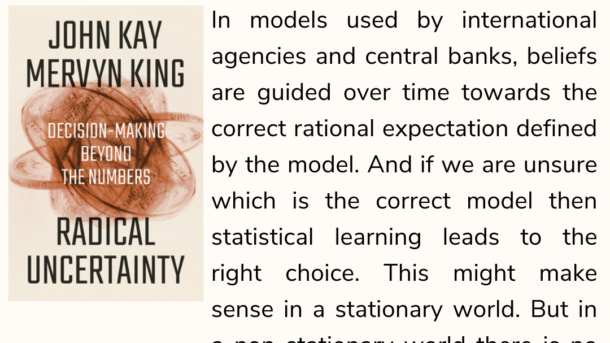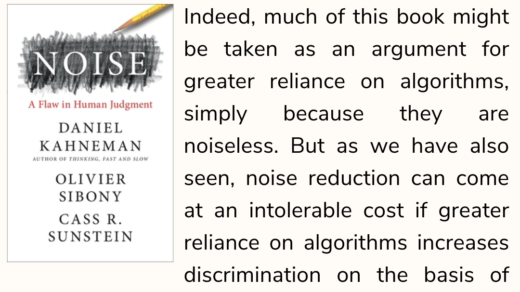In models used by international agencies and central banks, beliefs are guided over time towards the correct rational expectation defined by the model. And if we are unsure which is the correct model then statistical learning leads to the right choice. This might make sense in a stationary world. But in a non-stationary world there is no underlying probability distribution or model to discover. The process of forming expectations is one in which the views of friends and colleagues, the stories in the Daily Mail or the New York Times , the news and prognostications on Fox News or BBC, play an important role. We are social animals, even in – and perhaps especially in – the trading rooms of investment banks. People talk to each other and learn from each other. They read the same Daily Mail and New York Times , and Fox News and BBC show the same pictures on every screen. Social media have speeded up this process. Traders imitate each other and may try to outwit each other. It is entirely in accordance with reason and logic to learn from other people’s mistakes rather than wait and learn only from one’s own. Beliefs are embodied in a narrative, and the prevailing narrative can change in an abrupt or discontinuous fashion when a sufficiently large number of people see evidence that leads them to change their view. Such evidence might be derived from fresh regression analysis. Or from watching pictures of bewildered former Lehman employees carrying their possessions into the street in cardboard boxes. Or from messages conveyed by social media. The events of September 2008 changed the prevailing narrative and led to discontinuous changes in expectations. No one had imagined that the sophisticated American financial system would find itself on the brink of collapse. Central banks were not prepared to deal with the consequences of such a failure. Compared with the vast array of financial instruments in the world, the simplicity of a single financial asset in the textbook model did not generate insights, and so central banks relied more on a study of financial history than the predictions of econometric models.
The key point in this whole excerpt, and probably the book is that almost all social and economic phenomenon are non-stationary. In such cases, we will not be able to discover any 1 “true” model unlike say for the fields of Physics or Chemistry. Heck, its downright impossible to 100% predict the movements of more than 2 objects exerting gravity on each other with today’s computing power, much less predict social or economic trends where there are infinite variables.
In a non-stationary world, it, according to the authors, it makes more sense to learn from others, whether it be from social media, personal connections or from the history books. Doing so is much better than holding any 1 “true model” to forecast things anyways. Relying on just 1 true model, as the authors would say, is closer to that of religion and faith than science.



